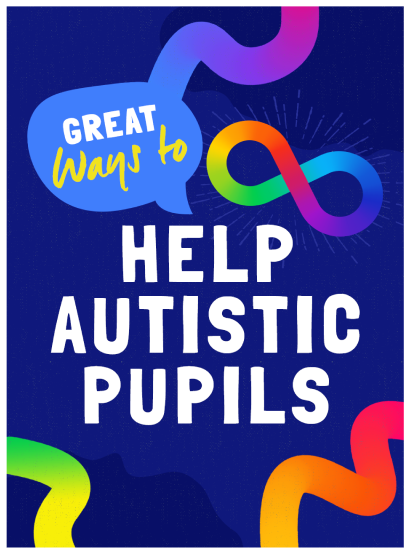What is PDA? – Understanding pathological demand avoidance

Jilly Davis explains how to recognise PDA symptoms and offer effective support and strategies…

- by Jilly Davis

Pathological demand avoidance (PDA) is widely understood to be a ‘profile’ on the autism spectrum – one way in which autism can present.
A PDA profile means that individuals share autistic characteristics, although these can be less obvious at first, and in addition they’re driven to avoid everyday demands and expectations, using approaches that are ‘social in nature’, such as distraction, procrastination, making “excuses,” physical incapacitation, or withdrawal into fantasy, in order to do so.
With PDA, demands of all types, including many things you might not think of as demands, can trigger an automatic threat or anxiety response and a feeling of panic can rapidly set in. This can include things that PDA individuals want to do as well as things they prefer not to.
It’s important to remember that PDA is a question of can’t, not won’t and that it’s due to neurodiversity not naughtiness! PDA adults often describe it as a ‘neurological tug of war’ between brain, heart and body.
It’s also crucial to remember the many positive qualities of PDA individuals, who are often talented, passionate, intelligent, charismatic, brave and creative! PDA students can be highly rewarding to teach.
Recognising PDA
There’s no single way in which PDA learners present in the classroom, but you may see a child…
- appearing social with strong expressive language capacities and the ability to read others’ emotions, but with skills fluctuating depending on their overall state of regulation
Trending
Supporting students
It’s fair to say that most conventional approaches, based on firm boundaries and the use of rewards, consequences and praise are often ineffective and counter-productive for a PDA learner.
A low-arousal, empathetic approach that focuses on reducing triggers, avoiding confrontation and de-escalating situations is a good starting point.
Best practice for PDA involves the whole school learning as much as possible about the profile, fully committing to inclusion, continually reflecting on practice and making adaptations to meet pupils’ needs.
Staff need to engage with a PDA student and their family to find out what PDA feels like for them, and discover their strengths, interests and aspirations.
Armed with this knowledge, it’s then about working as collaboratively, fluidly and flexibly as possible to tailor teaching, the curriculum and the environment to meet the individual’s needs and build trust.
The degree of support needed is likely to vary considerably, depending on the student’s individual presentation and their prior experience of the education system, but also at different times – for example, the start of the day or week may be trickier. Or in different environments, as certain lessons may be more challenging than others.
Adaptations for PDA learners
Best practice for supporting autistic learners may need adaptations when it comes to supporting pupils with PDA.
PDA learners require a less directive style, with a focus on reducing unnecessary demands and allowing them as much choice, control and input into their learning as possible.
Altering phraseology can have a very positive impact. Try using declarative language (statements, comments or observations), such as “Your books are on the desk, I’m happy to help.”
Or introduce an element of choice – instead of “Write your name on the page,” you could try “I wonder whether you’d like to use a pen, pencil or felt tip to write your name today?”.
Introducing some fun, variety and spontaneity can work wonders. PDA learners do need to know what’s happening when and why, but don’t always need a strictly consistent routine.
Visual strategies, which can be helpful for many autistic children, may not be as effective for PDA learners but can be adapted as ‘empowering tools’ to encourage involvement and interaction – they work best if the student is involved in the format and if meaningful, motivating images are used.
Conventional reward systems add further demand and anxiety to a PDA pupil’s day. Reward systems work best if they’re personalised (find out what your student genuinely finds rewarding) and implemented immediately.
Praise is an implied demand, but acknowledging effort and admiring outcomes rather than praising the individual can help build trust.
Adaptions that you’ll be familiar with from working with other autistic students, such as sensory adjustments, movement breaks and the provision of safe spaces to access when required, are likely to be beneficial for PDA learners, though in many cases they’ll often be keen not to ‘stand out’ from their peers.
Your teaching style
Building a trusting relationship is key to success with PDA students, so the most important adaptation will be in how adults interact with learners and how much flexibility can be introduced into all aspects of the school experience.
Here are some suggestions:
Collaborate – focus on the end goal rather than the means of getting there; negotiate when appropriate; suggest rather than expect; adopt a person-centred approach.
- Be led by the student– PDA pupils need to see a meaningful purpose to learning and often thrive when able to follow what they’re passionate and inquisitive about, or when something becomes relevant or useful to their lives. Ideally try to strike a balance between the academic syllabus and options based on a learner’s special interests.
Jilly Davis is a PDA Society trustee and trainer. Take a look at the PDA’s information for education professionals including case studies, EHCP guides, best practice guidelines, books and training courses. Browse more resources for Autism Acceptance Week, including our autism in girls checklist.










